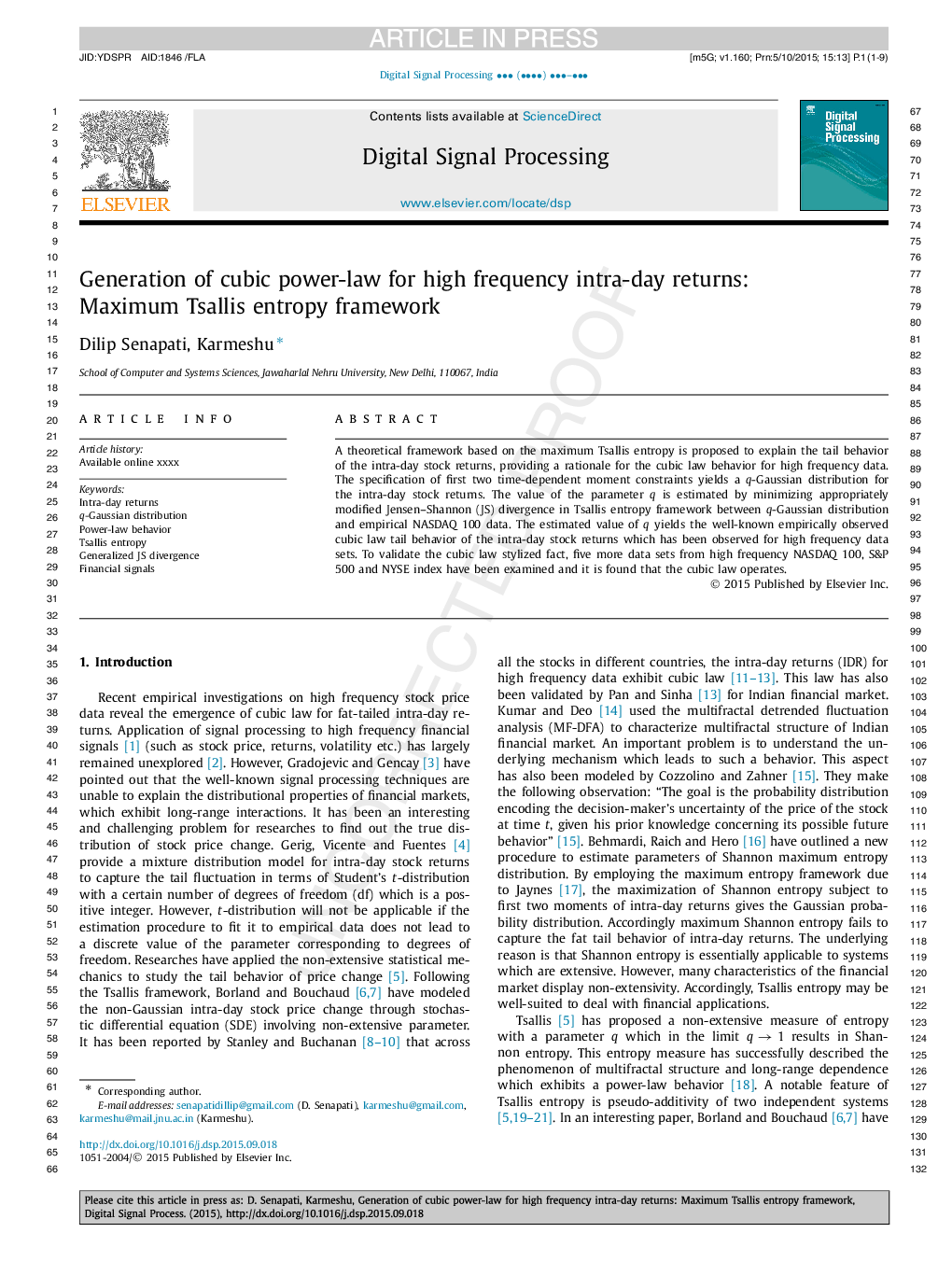| Article ID | Journal | Published Year | Pages | File Type |
|---|---|---|---|---|
| 6952015 | Digital Signal Processing | 2016 | 9 Pages |
Abstract
A theoretical framework based on the maximum Tsallis entropy is proposed to explain the tail behavior of the intra-day stock returns, providing a rationale for the cubic law behavior for high frequency data. The specification of first two time-dependent moment constraints yields a q-Gaussian distribution for the intra-day stock returns. The value of the parameter q is estimated by minimizing appropriately modified Jensen-Shannon (JS) divergence in Tsallis entropy framework between q-Gaussian distribution and empirical NASDAQ 100 data. The estimated value of q yields the well-known empirically observed cubic law tail behavior of the intra-day stock returns which has been observed for high frequency data sets. To validate the cubic law stylized fact, five more data sets from high frequency NASDAQ 100, S&P 500 and NYSE index have been examined and it is found that the cubic law operates.
Related Topics
Physical Sciences and Engineering
Computer Science
Signal Processing
Authors
Dilip Senapati, Karmeshu Karmeshu,
